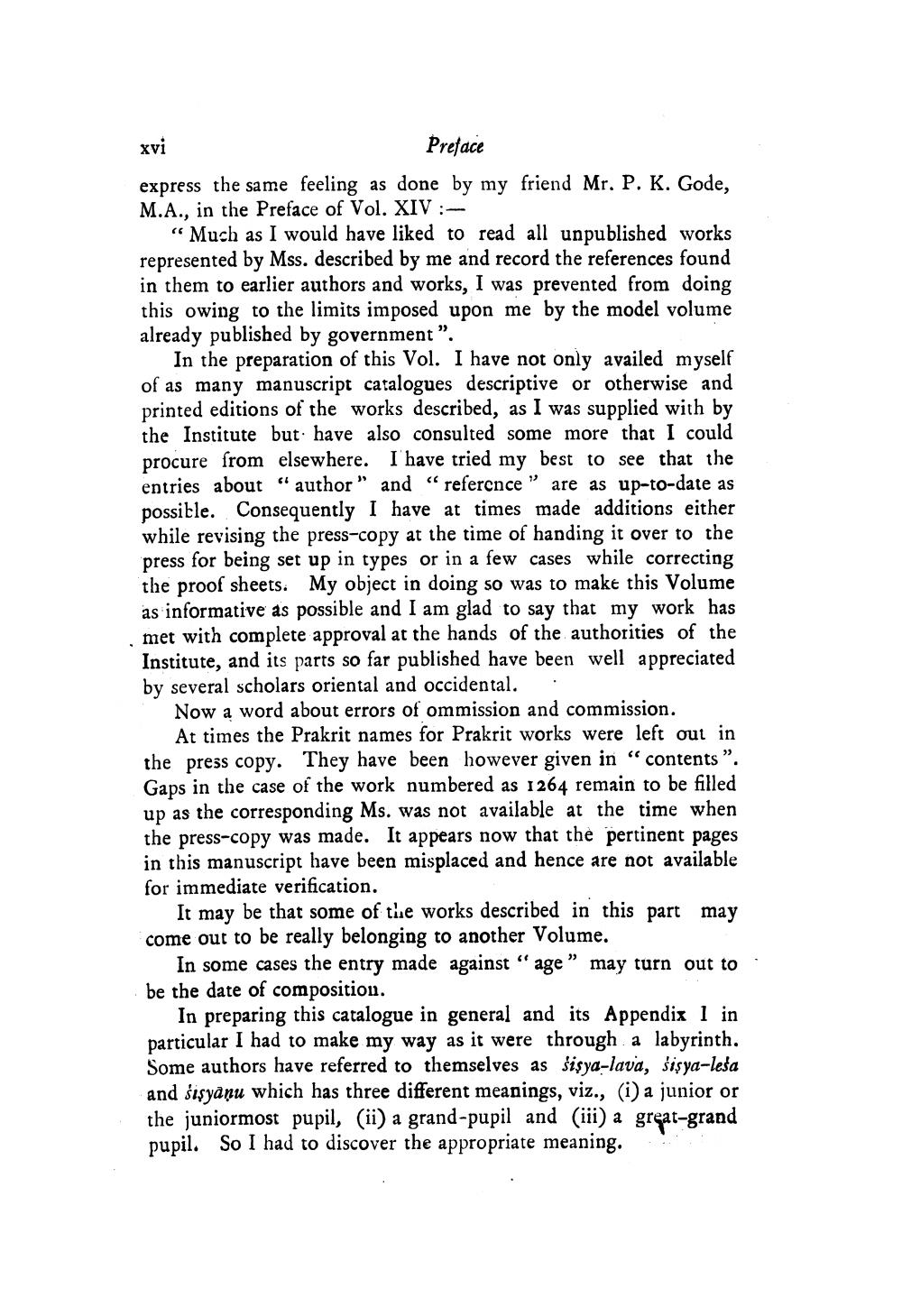________________
xvi
Preface express the same feeling as done by my friend Mr. P. K. Gode, M.A., in the Preface of Vol. XIV :
“Much as I would have liked to read all unpublished works represented by Mss. described by me and record the references found in them to earlier authors and works, I was prevented from doing this owing to the limits imposed upon me by the model volume already published by government".
In the preparation of this Vol. I have not only availed myself of as many manuscript catalogues descriptive or otherwise and printed editions of the works described, as I was supplied with by the Institute but have also consulted some more that I could procure from elsewhere. I have tried my best to see that the entries about "author" and “reference " are as up-to-date as possible. Consequently I have at times made additions either while revising the press-copy at the time of handing it over to the press for being set up in types or in a few cases while correcting the proof sheets. My object in doing so was to make this Volume as informative as possible and I am glad to say that my work has met with complete approval at the hands of the authorities of the Institute, and its parts so far published have been well appreciated by several scholars oriental and occidental. .
Now a word about errors of ommission and commission.
At times the Prakrit names for Prakrit works were left out in the press copy. They have been however given in “contents”. Gaps in the case of the work numbered as 1264 remain to be filled up as the corresponding Ms. was not available at the time when the press-copy was made. It appears now that the pertinent pages in this manuscript have been misplaced and hence are not available for immediate verification.
It may be that some of the works described in this part may come out to be really belonging to another Volume.
In some cases the entry made against " age” may turn out to be the date of composition.
In preparing this catalogue in general and its Appendix 1 in particular I had to make my way as it were through a labyrinth. Some authors have referred to themselves as šisya-lava, śisya-leša and sispāņu which has three different meanings, viz., (i) a junior or the juniormost pupil, (ii) a grand-pupil and (iii) a great-grand pupil. So I had to discover the appropriate meaning.




